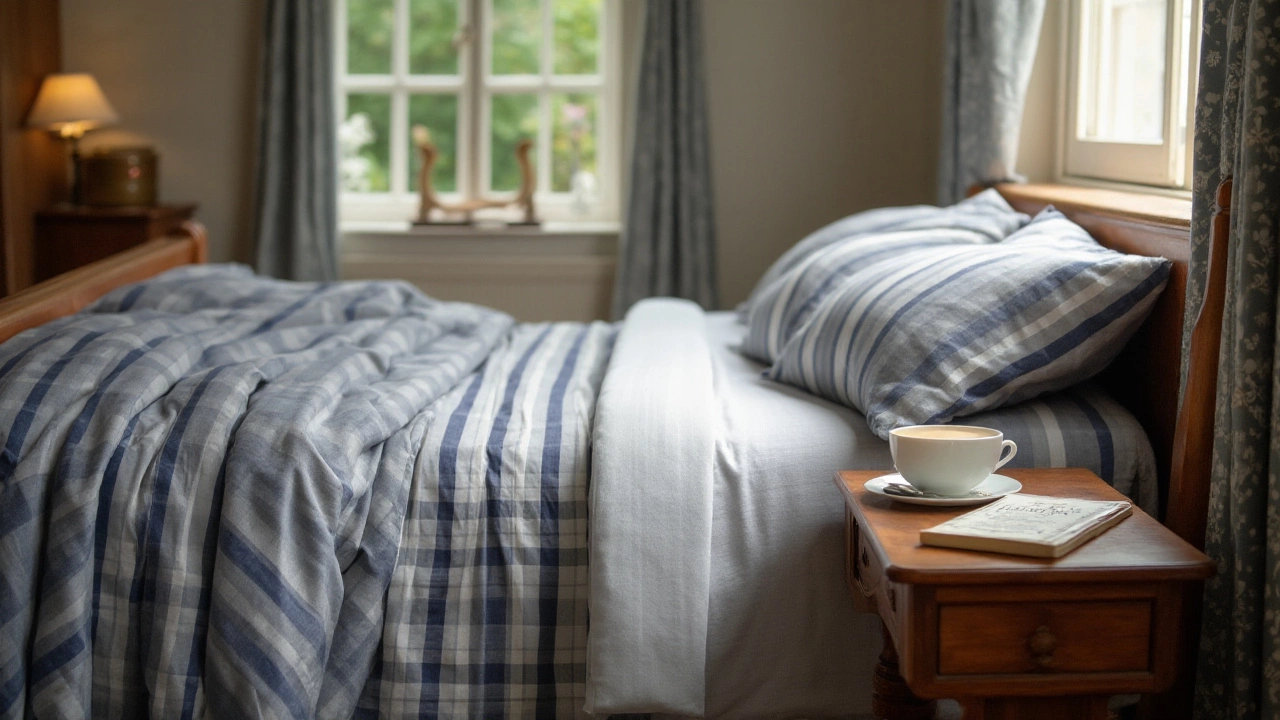Eco‑Friendly Bed Linens: Better Sleep, Better Planet
If you’ve ever wondered whether your sheets could do more than just cover the mattress, you’re in the right spot. Switching to eco‑friendly bed linens isn’t a trend; it’s a simple upgrade that trims waste, lowers your carbon footprint, and often feels softer than conventional cotton.
Why Choose Sustainable Materials?
Organic cotton, Tencel, and linen made from responsibly grown fibers are the stars of green bedding. Organic cotton skips synthetic pesticides, so the soil stays healthy and the water stays cleaner. Tencel, produced from eucalyptus trees, uses a closed‑loop process that recycles most of the solvents, leaving a silky‑smooth fabric that breathes well. Linen, made from flax, needs less water than cotton and gets softer the more you wash it.
All three options give you temperature regulation – cool in summer, warm in winter – which can improve sleep quality. Plus, they tend to be durable, meaning you replace them less often and keep waste down.
What to Look for When Shopping
1. Certifications. Look for GOTS (Global Organic Textile Standard) for organic cotton or OEKO‑Tex for low‑chemical processing. These labels guarantee the fabric meets strict environmental and safety standards.
2. Thread count myths. Higher isn’t always better. A 200‑300 thread count in organic cotton often feels crisper than a 600‑count conventional weave. Focus on fiber quality, not just numbers.
3. Blend wisely. Some eco‑linen blends mix linen with organic cotton for a balanced feel and lower price point. Check the label to see which fiber dominates.
4. End‑of‑life options. Brands that offer recycling or take‑back programs make it easier to keep your bedding circular.
At Eco Harmony Home we only stock products that meet at least two of these criteria, so you can shop confidently.
Care Tips to Stretch the Life of Green Bedding
Eco fabrics love a gentle touch. Wash them in cold or lukewarm water on a gentle cycle, avoid bleach, and use a mild, plant‑based detergent. Hang‑drying is ideal; if you need a dryer, choose a low‑heat setting and clean the lint filter regularly. A little extra care now means fewer replacements later.
For stubborn stains, treat them quickly with a mix of water and white vinegar. It’s natural, safe for the fibers, and won’t harm the environment.
Feel the Difference, See the Impact
Switching to eco‑friendly bed linens can save around 10‑15% of a household’s water usage per wash and cuts down on the chemicals that end up in waterways. The comfort boost is a bonus – many users report softer skin, less night‑time sweating, and a calmer bedroom vibe.
Ready to upgrade? Browse our curated collection of organic cotton sheets, Tencel duvet covers, and linen pillowcases. You’ll find clear info on each product’s origins, certifications, and care instructions. A greener bedroom starts with a single set of sheets – make it count.
Sleep better, live greener, and enjoy the peace of mind that comes with choosing responsibly. Your bed deserves the best, and so does the planet.
-

Bedding Explained: The Ultimate Guide to Bed Linens, Comfort, and Style
Discover what bedding means, its types, the fabrics used, and tips for choosing bed linens that boost comfort and style for restful sleep and a beautiful bedroom.
-

Exploring the World of Bedding: What Else Is It Called?
When we talk about bedding, it often refers to the materials laid above the mattress for comfort and decoration. Known colloquially by terms such as bed linens or bedclothes, bedding encompasses anything from sheets to comforters and pillowcases. Understanding the different terms used interchangeably with bedding can help in selecting the right set for your home. This article delves into the various names and provides tips on choosing and caring for these essential home decor items.
